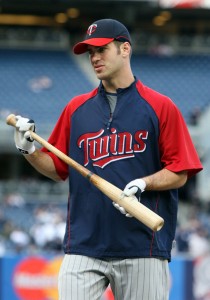Advantages of other sports
October 1, 2012 by Coach McCreary
Filed under Off-Season
Some challenging questions arise this time of year for baseball players. Some are as follows:
- Should I continue/start playing other sports in the off-season?
- Should I play baseball year-round?
- Will I make the team in the spring if I’m not playing fall ball with the high school players.
- Should I get private lessons to improve my chances of making the team or should I put my emphasis in another sport.
- Will the baseball coach get mad if I take the fall off?
- Since I pitch, is it better for my arm to stop throwing until the spring or should I throw year-round?
- Are the coach’s “optional” off-season workouts really optional?
In reality, none of these questions are easily answered because every player, program, and coach is different. Future posts may deal with some of the questions but this one will deal with the first one: “Should I continue/start playing other sports in the off-season?”
All things considered, I think the answer is YES. Here are my reasons why:
It gives your arm a break. Let’s face it. Throwing overhand is not the way the elbow and shoulder were built to move. That’s why even pitchers with great mechanics still get hurt. I am a firm believer that the arm needs rest after the long spring and summer season. Not many major league players pick up a baseball between the time their season ends until around January 1. If million dollar arms do that, there is no reason why a young player needs to do much throwing during that time either. If players have specific needs regarding mechanical adjustments, that can still be done without a ton of throwing.
Scouts want athletes. Ever watch the MLB draft unfold and shake your head at who was selected and who wasn’t? A player who doesn’t have great numbers is a high pick and a player with tremendous high school or college stats is a low pick or not drafted at all. What explains that? There could be a number of things but often it has to do with the players’ athleticism. Great athleticism is transferable. Great athletes can generally be taught how to do specific skills needed to play. You can’t teach someone to be a great athlete. Great athletes play multiple sports. That’s in part why they are called “great athletes.” Scouts will not look down on a kid who plays multiple sports. In fact, it’s a plus in their column if they do.
All around strength. Playing other sports not only rests your baseball muscles, they strengthen the rest of your body which in turn helps your baseball muscles. For example, baseball players don’t really benefit from huge biceps. The tricep is more important to the actions involved in baseball. However, the bicep supports the tricep and vice versa. Other sports may use the bicep more which can allow the bicep to strengthen and therefore support the tricep more come baseball season. The body is full of such combinations.
Skills from one sport often transfers well to baseball. The running associated with soccer and cross-country can help strengthen the legs of pitchers. The hand and foot quickness of basketball can help with first step quickness and middle infield transfers. The wrist and hand strength gained in wrestling can help improve the hands for hitting. Just because you are not playing baseball does not mean you are neglecting your baseball skills.
Multiple sports helps your social life. Year-round anything usually means a social life that includes mainly other kids who are doing the same activity year-round as well. Different activities mean different interactions with different people. Social skills can only improve which of course goes far beyond the value of baseball.






Leave a Reply